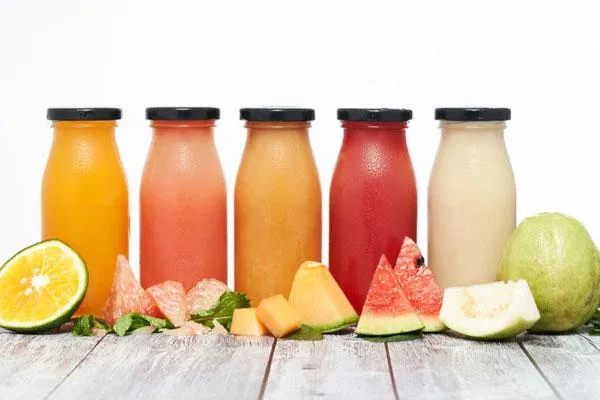
Functional Beverages 2025: U.S. Trends, Science, and Market Insights
🥤Functional Beverages in the U.S. (2025): What’s in the Can—and Why Everyone’s Reaching for It
“Functional beverages” are drinks formulated to do more than hydrate—think energy + focus, gut health, immunity, recovery, sleep, mood, and longevity. From canned adaptogenic teas to non-alcoholic “spirits,” the category is reshaping store shelves and daily routines. Below, we break down what’s selling, what’s credible, and how consumers actually use these products across their day.
Health note: This article is educational and not a substitute for medical advice. People who are pregnant, nursing, have medical conditions, or take medications should review labels and consult a clinician.
1) What Counts as a Functional Beverage?
Focus & energy: Caffeinated coffees/teas, yerba mate, guayusa; nootropic blends (L-theanine, L-tyrosine, choline, lion’s mane).
Hydration & recovery: Electrolyte waters/powders (sodium, potassium, magnesium), amino acids/EAAs.
Gut health: Fermented drinks (kefir, kombucha), probiotic and prebiotic sodas (inulin, resistant dextrin).
Stress & sleep: Adaptogens (ashwagandha, reishi), magnesium, L-theanine, tart cherry (melatonin precursors).
Immune & longevity: Vitamin C/D/Zn combos, polyphenol-rich teas/cocoa, nitrate-rich beet shots, matcha.
Protein & metabolic: RTD protein shakes (whey/casein/plant), glucose-friendly “no spike” formulations.
Mindful socializing: Non-alcoholic aperitifs and spirits with botanicals/nootropics to replace or reduce alcohol.
2) Consumer Insights: Who Buys, When, and Why
Occasion-based choices:
Morning: Coffee/matcha upgrades for clean energy + calm focus (caffeine + L-theanine).
Workout window: Electrolytes, EAAs/RTDs; some add beet or nitrate shots for endurance.
Afternoon slump: Lower-sugar “smart sodas” with prebiotics or mild caffeine (green tea/mate).
Evening wind-down: Magnesium, L-theanine, tart cherry, or non-alcoholic cocktails for relaxation without hangover.
Demographics:
Gen Z & Millennials lead discovery; women 25–44 over-index on gut health and stress relief; active 35–55 gravitate to recovery/electrolytes with fewer sweeteners.
Values that close the sale:
Clean label (short ingredient lists), low/zero sugar, natural flavors, verified potency (standardized extracts), and sustainable packaging (aluminum, recycled PET).
Price tolerance: Consumers will trade up for perceived efficacy (clinical dose callouts) and taste. Subscriptions work for daily-use SKUs (coffee, hydration).
3) Science Snapshot: What Actually Has Evidence?
Bottom line: dose and context matter. Many benefits require clinically relevant amounts, not “pixie dust” sprinklings.
Focus & Energy
Caffeine (50–200 mg) improves vigilance and reaction time; pairing L-theanine (100–200 mg) can smooth jitters and support attention.
Creatine (3–5 g/day) shows cognitive and performance benefits—more common in powders than canned drinks.
L-tyrosine (300–600 mg) may support cognitive performance under stress.
Hydration & Electrolytes
Sodium is the key performance electrolyte for heavy sweaters; potassium/magnesium support muscle/nerve function. Look for ~200–500 mg sodium per serving for endurance contexts; less for casual use.
Gut Health
Probiotics: Efficacy is strain-specific and dose-dependent (often ≥1–10 billion CFU); shelf-stability matters.
Prebiotics (inulin, resistant dextrin, GOS): Support beneficial bacteria; typical effective doses 3–10 g/day—start low to avoid GI discomfort.
Kombucha/kefir: Provide acids and live cultures; sugar content varies—check labels.
Stress, Mood & Sleep
L-theanine (100–200 mg) promotes relaxation without sedation.
Magnesium glycinate/citrate (100–200 mg elemental) may ease tension/sleep latency for low-intake users.
Ashwagandha (≥120–300 mg withanolide-standardized extract) shows stress/sleep benefits in several trials; choose standardized, third-party tested products.
Tart cherry (polyphenols + melatonin precursors) may improve sleep quality in some studies.
Performance & Longevity Adjacent
Nitrates (beet juice ~300–600 mg nitrate) can reduce oxygen cost of exercise, aiding endurance.
Polyphenols (green tea catechins, cocoa flavanols) support vascular function and may aid cognition—watch caffeine and sugar.
Safety flags: Caffeine stacking across products, high-dose niacin “flush,” GI upset from fiber/prebiotics, adaptogen–medication interactions. Pregnant/nursing individuals should avoid certain botanicals and high caffeine.
4) Label Intelligence: How to Read a Functional Drink
Active dose callouts: Are efficacious ranges listed (e.g., “L-theanine 200 mg”)?
Sugar & sweeteners: Prefer ≤5–8 g sugar/serving or unsweetened; assess tolerance for stevia/monk fruit vs. sugar alcohols.
Transparency: Named strains (e.g., L. rhamnosus GG), standardized extracts (e.g., “≥5% withanolides”).
Caffeine disclosure: Total mg per serving; watch multi-serve cans.
Third-party testing: NSF/USP or brand-specific quality seals increase trust.
5) Market Dynamics & U.S. Retail Implications
Channel shift: Beyond natural/specialty into convenience, fitness studios, and corporate micro-markets.
Assortment strategy: Retailers dedicate a “functional bay” grouped by benefit state (Focus, Gut, Hydration, Sleep), not by ingredient—improves basket size.
Price bands:
Hydration/electrolytes: accessible, high velocity.
Adaptogenic/nootropic cans: premium; succeed with clear use-case and taste.
Protein RTDs: mainstream pricing; lactose-free and low-sugar SKUs expand audience.
Regulatory watch: Claims must remain structure/function (e.g., “supports focus”), not disease claims. Expect scrutiny on caffeine in youth and supplement-in-a-beverage gray zones.
Supply & sustainability: Aluminum cans favored; concentrate/powder formats grow for lower shipping emissions and cost.
6) What’s Next (12–24 Months)
Dose-verified labels with QR-linked COAs (certificates of analysis).
Hybrid stacks: Caffeine+theanine+nootropics; probiotic+prebiotic “synbiotic sodas”; magnesium + glycine nightcaps.
GLP-1 era synergies: Hydration/protein RTDs that support satiety and lean-mass retention for people on weight-management meds.
Microbiome personalization: At-home tests pair with subscription beverages tailored to fiber/probiotic needs.
Mindful socializing: NA options with complex botanicals replace weekday cocktails.
7) Practical Picks (Use Cases You Can Recommend)
Morning focus (low jitter): 60–100 mg caffeine + 150–200 mg L-theanine; ≤5 g sugar.
Long runs/heat: Electrolyte drink with 200–500 mg sodium + potassium; confirm sweat rate.
Gut support: Prebiotic sodas with 3–5 g fiber; add fermented foods at meals.
Sleep ritual: Caffeine-free; magnesium (100–200 mg elemental) + L-theanine (100–200 mg) or tart cherry—30–60 min pre-bed.
Post-training: 20–40 g protein RTD; consider carb + sodium for endurance sessions.
8) Buyer Beware: Red Flags
Vague proprietary blends without amounts
“Clinically proven” with no references or sub-therapeutic doses
High caffeine layered with other stimulants
Excess sugar (>12–15 g/serving) hiding under “natural” positioning
Adaptogens without standardization or quality testing









